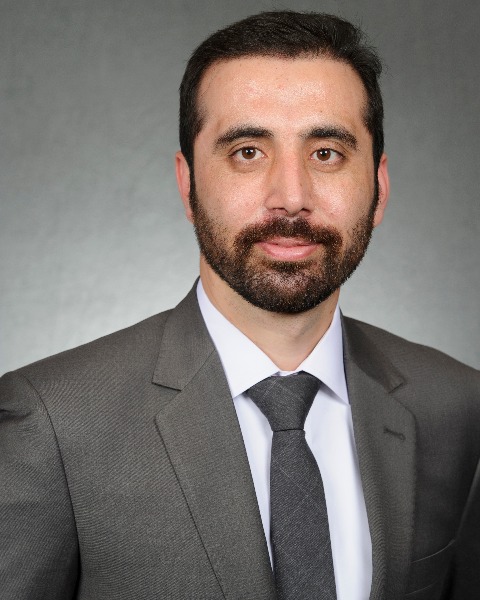Sunday Poster Session
Category: Biliary/Pancreas
P0057 - Evaluation of Performance of Score to Predict Choledocholithiasis in Patients Presenting With Acute Cholecystitis
Sunday, October 26, 2025
3:30 PM - 7:00 PM PDT
Location: Exhibit Hall

Ali Sajid, MBBS
Aiken Regional Medical Centers
Aiken, SC
Presenting Author(s)
Sopio Motsonelidze, MD, Farhana Alam, MD, Ali Sajid, MBBS, Hafiza Mahwish Sadiq, MBBS, Ali Rabib, MD, Khalid Abusaada, MD
Aiken Regional Medical Centers, Aiken, SC
Introduction: Choledocholithiasis is present in a significant proportion of acute cholecystitis(ACC) patients.Performance of the American Society for Gastrointestinal Endoscopy (ASGE) guidelines to predict choledocholithiasis in this setting is not well defined.We conducted this study to evaluate the performance of the ACGE predictive model in predicting choledocholithiasis in patients with ACC.
Methods: In our retrospective study we included patients with ACC hospitalized at our institution from 2016 to2022.Patients classified as having a high, intermediate or low risk of choledocholithiasis based on ASGE guidelines. We evaluated the association of each component of the ASGE classification scheme with choledocholithiasis using multivariate logistic regression.Performance of the ASGE predictive model was evaluated using the area under the receiver operating curve(AUROC).New predictive model was developed to improve the performance of the ACGE model by eliminating variables that were not independently associated with choledocholithiasis.
Results: 338 patients included in the study.35(10.36%) of the patients had choledocholithiasis.In a multivariate analysis there was no difference in age, AST, and ALT levels between the two groups. But, total bilirubin, alkaline phosphatase,CBD dilatation, and the presence of CBD stones on imaging were significantly associated with choledocholithiasis.ASGE predictive model had a modest performance in predicting choledocholithiasis in this population(AUROC 0.67, 95% CI 0.60-0.74). The specificity of the model was excellent for the high-risk group (99.01%)however the specificity for the intermediate risk group was very low(20.4%) resulting in only 28% of the patients being correctly classified in this group. An adjusted model that removed age and replaced abnormal LFTs with either abnormal total bilirubin or alkaline phosphatase level more than twice the upper limit of normal resulted in a better performance(AUROC 0.84,95%CI 0.79-0.88).Adjusted model improved the specificity for the intermediate group compared to the ACGE model(67.83 vs 20.4%) with no change in sensitivity(97.14 vs 97.14).Adjusted model improved the proportion of patients correctly classified in the intermediate group(64.79 vs 28.4%)
Discussion: Age and abnormal AST and ALT have no predictive value of choledocholithiasis in patients admitted with ACC.Removing these variables from the ACGE model results in significant improvement in the performance of the model.The adjusted model needs external validation.
Disclosures:
Sopio Motsonelidze indicated no relevant financial relationships.
Farhana Alam indicated no relevant financial relationships.
Ali Sajid indicated no relevant financial relationships.
Hafiza Mahwish Sadiq indicated no relevant financial relationships.
Ali Rabib indicated no relevant financial relationships.
Khalid Abusaada indicated no relevant financial relationships.
Sopio Motsonelidze, MD, Farhana Alam, MD, Ali Sajid, MBBS, Hafiza Mahwish Sadiq, MBBS, Ali Rabib, MD, Khalid Abusaada, MD. P0057 - Evaluation of Performance of Score to Predict Choledocholithiasis in Patients Presenting With Acute Cholecystitis, ACG 2025 Annual Scientific Meeting Abstracts. Phoenix, AZ: American College of Gastroenterology.
Aiken Regional Medical Centers, Aiken, SC
Introduction: Choledocholithiasis is present in a significant proportion of acute cholecystitis(ACC) patients.Performance of the American Society for Gastrointestinal Endoscopy (ASGE) guidelines to predict choledocholithiasis in this setting is not well defined.We conducted this study to evaluate the performance of the ACGE predictive model in predicting choledocholithiasis in patients with ACC.
Methods: In our retrospective study we included patients with ACC hospitalized at our institution from 2016 to2022.Patients classified as having a high, intermediate or low risk of choledocholithiasis based on ASGE guidelines. We evaluated the association of each component of the ASGE classification scheme with choledocholithiasis using multivariate logistic regression.Performance of the ASGE predictive model was evaluated using the area under the receiver operating curve(AUROC).New predictive model was developed to improve the performance of the ACGE model by eliminating variables that were not independently associated with choledocholithiasis.
Results: 338 patients included in the study.35(10.36%) of the patients had choledocholithiasis.In a multivariate analysis there was no difference in age, AST, and ALT levels between the two groups. But, total bilirubin, alkaline phosphatase,CBD dilatation, and the presence of CBD stones on imaging were significantly associated with choledocholithiasis.ASGE predictive model had a modest performance in predicting choledocholithiasis in this population(AUROC 0.67, 95% CI 0.60-0.74). The specificity of the model was excellent for the high-risk group (99.01%)however the specificity for the intermediate risk group was very low(20.4%) resulting in only 28% of the patients being correctly classified in this group. An adjusted model that removed age and replaced abnormal LFTs with either abnormal total bilirubin or alkaline phosphatase level more than twice the upper limit of normal resulted in a better performance(AUROC 0.84,95%CI 0.79-0.88).Adjusted model improved the specificity for the intermediate group compared to the ACGE model(67.83 vs 20.4%) with no change in sensitivity(97.14 vs 97.14).Adjusted model improved the proportion of patients correctly classified in the intermediate group(64.79 vs 28.4%)
Discussion: Age and abnormal AST and ALT have no predictive value of choledocholithiasis in patients admitted with ACC.Removing these variables from the ACGE model results in significant improvement in the performance of the model.The adjusted model needs external validation.
Disclosures:
Sopio Motsonelidze indicated no relevant financial relationships.
Farhana Alam indicated no relevant financial relationships.
Ali Sajid indicated no relevant financial relationships.
Hafiza Mahwish Sadiq indicated no relevant financial relationships.
Ali Rabib indicated no relevant financial relationships.
Khalid Abusaada indicated no relevant financial relationships.
Sopio Motsonelidze, MD, Farhana Alam, MD, Ali Sajid, MBBS, Hafiza Mahwish Sadiq, MBBS, Ali Rabib, MD, Khalid Abusaada, MD. P0057 - Evaluation of Performance of Score to Predict Choledocholithiasis in Patients Presenting With Acute Cholecystitis, ACG 2025 Annual Scientific Meeting Abstracts. Phoenix, AZ: American College of Gastroenterology.
